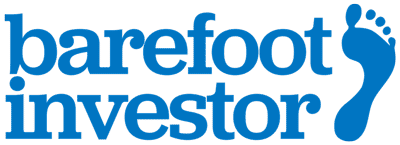How to buy a near new car at 60% off
Forty years ago, in a dusty car yard in Mildura, my father kicked the tyres of a Ford Falcon.
With his mutton-chop sideburns, flares, and Dennis Lillee-inspired bodyshirt, he cut a dashing figure as he strode around the lot, sizing up the vehicles.
He had two choices: Ford or Holden. (Yet really there was no choice — like his footy team, the decision was made at birth, and defended in the schoolyard).
“I’ll take the Falcon”, he said, shaking the hand of the dealer. It was time to upgrade: he’d recently got married and would soon be starting a family. So he was careful to ensure that his Falcon had the latest must-have safety feature: seat belts.
The car was as big as an inner-city studio apartment, and was finished in a gaudy gold which mimicked my mum’s tan at the time (hey, it was the 70s). It also came with metal ashtrays in the front and the back (for the kids?), and a little driver’s triangular vent which allowed him to have a fag without having to wind down the window. Bless.
But here’s the really interesting thing: a new Falcon today is actually more affordable that when my old man bought his (based on the number of weeks it would take the average wage earner, then and now, to buy one).
In fact cars are arguably the cheapest they’ve ever been.
Pffft.
Cheapest, schmeapest. I’m the Barefoot Investor, and I want it even cheaper.
So this week I’ve done the numbers and come up with a strategy that will show you how you can drive around in a near-new car that’s still under warranty, for next to nothing.
Yet before I do, let me explain how the car industry really works.
How Car Dealers Make their Money
The truth is that dealers make bugger all when they sell a brand new car. Let me give you an example:
In 1998, a brand new Falcon XR6 sold for $43,990 (with one lonely airbag).
In today’s dollars it would cost $70,590, according to the RBA’s inflation calculator.
However, you can buy a 2015 XR6 for just $35,990.
And here’s the thing, not only is it (relatively speaking) half the price, but it comes loaded with a reversing camera, six airbags, electronic stability control, a driver fatigue warning system, and front and back parking sensors. And if you crash, the car will autodial ‘000’ and feed the emergency services your GPS location.
It’s a bit tough for car dealers, though. I spoke recently to Josh Dowling, editor of Carsguide.com.au, who told me that, when there’s a sale (and when is it ever not?), the average Hyundai dealer makes just $450 profit on one of Australia’s top-selling cars, the i30. “They can’t even afford to throw in floormats or they’ll lose money”, says Josh.
So how do they make their money?
Two ways.
Firstly, it’s been said that Ford makes more money from providing car finance than it does from actual car sales. Secondly, the big profit margin for most dealers comes from parts and servicing. In fact, this can generate more than half of their profits.
That explains why, when I bought my second-hand Toyota, the dealer programmed the scheduled servicing straight into my GPS.
Fair dinkum, every three months, my satnav says: “It’s time for a service. Call Jessie at Kyneton Toyota: 03 5421 0210.”
And, like a nasty little rash, the longer I ignore it, the worse it gets. After a while my Toyota starts beeping and flashing at me: “Go to your dealer NOW” (and bring your credit card). Talk about Herbie Goes Bananas! (Or maybe KITT if you’re a Gen X, Siri if you’re Gen Y, or Uber if you’re a millennial).
How to Get That New Car Smell (Without Paying Through the Nose)
Back to that great deal I was telling you about.
There’s an old saying in the business: the biggest car accidents occur on the showroom floor. So this week I worked with Redbook (the leading car info and pricing site in Australia) to come up with a plan that will save you thousands of dollars and ensure you’re always driving around in a car that’s under warranty and is chock-full of the latest gadgets.
Let’s roll the numbers:
A brand new 2014 Falcon XR6 would have cost you $35,990.
Today, one year later, you can pick one up, in very good condition with 15,000 kilometres on the clock, for just $24,250 (a saving of $11,740).
It will still have two years to go on the manufacturer’s warranty and, just as importantly, fixed price servicing ($270 in the first year and $365 in the second year), which can save you a packet.
If you then drive the XR6 for another two years, and sell it at the end of the new car warranty, you’ll be able to sell it for $19,600, according to Redbook.
“Cars lose a massive amount of money in their first year, and then level off for the next couple”, Ross Booth, the global manager of Redbook, tells me.
So let’s recap: for the past two years you’ve driven around a nearly new car, enjoying the faint whiff of a new car smell and all the latest safety bells and whistles. It’s still covered by the manufacturer’s warranty, and (unlike a second-hand thirsty Merc) the servicing is just $635 for the two years (excluding tyres). So it’s cost you a total of $5,285, or $2,642 a year.
Like my dad, I understand the pull of a safe family car. The awesome thing is that in 2015 there’s never been a cheaper time to own one.
Tread Your Own Path!


